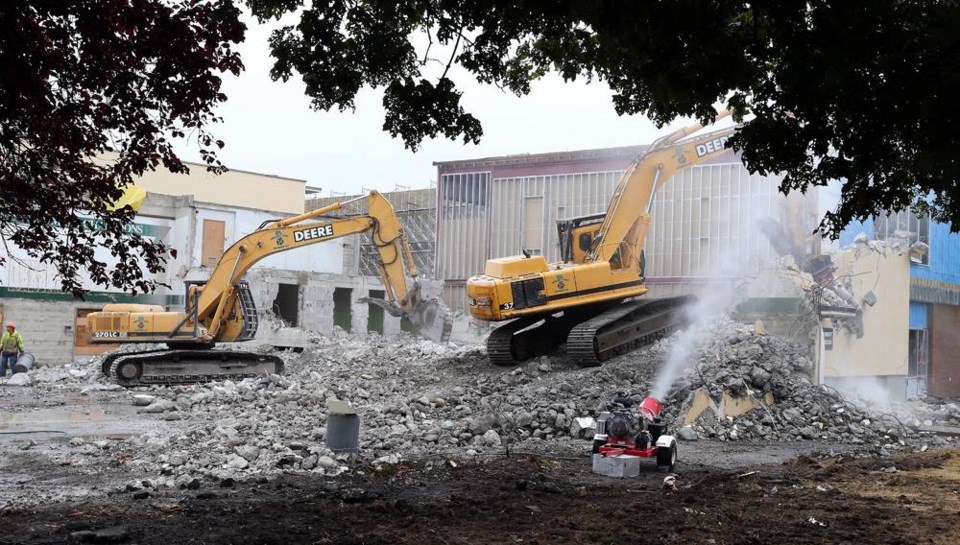Victoria is taking steps to divert construction waste from ending up in the landfill with a bylaw that will encourage deconstruction of buildings and salvage of reusable materials over standard demolition.
Deconstruction involves taking apart buildings, mostly by hand, in roughly the reverse order they were constructed, with some materials reused, such as old-growth timber and wood flooring, while others are recycled.
The practice could divert more than 3,000 tonnes of waste from the landfill, but comes at a higher cost than demolition, a staff report says.
“It’s really addressing a major area of waste generation here in the city of Victoria, which is construction waste,” Rory Tooke, manager of sustainability, assets and support services, told council this week. “It is identified as probably one of the most impactful initiatives we can take when it comes to waste production.”
Up to 37 per cent of the city’s landfill material comes from the construction sector, and about half of that waste is generated through demolition, said Christine Woodhouse, the city’s sustainable waste management specialist.
Woodhouse said recycling options already exist for some construction materials, such as concrete, asphalt, drywall, plaster and metals.
“But for other materials — like structural lumber, doors, windows, flooring, cabinets — there are opportunities to reuse those materials but we’re not taking advantage of that right now. A lot of that material is going to landfill or some of it is being burned,” she said.
Staff estimate salvaging materials from single-family homes, which make up the majority of the roughly 40 to 60 demolition permits issued each year, could divert 3,000 tonnes of waste from landfill annually.
Councillors voted Thursday to direct staff to draft a bylaw to motivate deconstruction over demolition for single-family homes, expected to come into effect next year.
As the lone opposing vote, Coun. Geoff Young said he found the idea idealistic.
“Although it’s a direction that we probably will want to go, I think once again us being the pioneers is likely to be very expensive both in terms of our staff time and effort and also in the impacts on people trying to build things in this municipality,” he said.
City staff say while the median cost for demolishing a single-family home in Victoria is around $12,000, the cost to deconstruct a home can vary from about $12,000 to $30,000, after the sale of salvaged lumber. The process also takes longer, several weeks versus several days for a demolition.
Casey Edge, executive director of the Victoria Residential Builders Association, said homebuyers will end up paying the additional costs associated with deconstruction.
“So the City of Victoria is adding thousands of dollars to the cost of a home,” he said.
Edge, who penned a letter to council opposing a bylaw, said he’s concerned that prioritizing deconstruction will extend timelines for projects and potentially create a bottleneck, because there’s currently just one deconstruction company operating in Victoria.
He questioned the impact deconstruction will have, saying “a lot of builders recycle what they can already.”
Rory Kulmala, CEO of the Vancouver Island Construction Association, said he hopes the city will find a way to encourage builders to deconstruct without adding challenges for the industry. “Ultimately, they just want to reduce the amount of materials going to landfill and I don’t think anybody is objecting to that,” he said.



